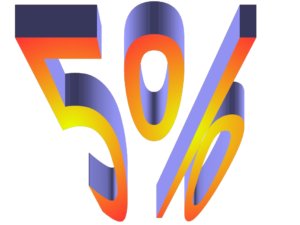For most people, this can be a disheartening situation since it means less money in your pocket.
But what if it meant the opposite?
The pundits speculate 2010 to be the year of trepidation, on both sides of the fence. Many fearful investors will slowly be re-entering the markets and many fearful companies will be making more strategic movements.
What better way to combat slow growth and safely reacquaint your cash with equities than by investing in stable companies paying healthy dividends.
Ironically, high-yielding dividends seem to have gone “out of style”. But not this season, they are back IN. Before the downturn, why would you settle for paltry 3-5% yields when appreciating stocks were returning many multiples of that.
Of course, the irony comes from the fact that dividends have historically accounted for approximately HALF of the total return.
Usually the argument for dividend stocks combines the “getting paid to wait” component with something about the future growth of the company. But with the bleak outlook, how long can you wait for the potential upside of your investments?
What if you didn’t have to wait for growth and instead capitalized on people’s hunger for reliable returns? Here’s where yield compression comes in. I came across this interesting phrase while reading through a fund’s prospectus.
As the demand for stable returns increases, people could flock to these plump yields. Even though your current yield will be decreasing, your principal investment will now be growing.
This happens because dividend yields are calculated as a ratio to share price. As the price of shares go up, the yield goes down. Providing a simple example, if the yield is halved than the stock has moved 100%.
According to the prospectus, the notion of yield compression was the catalyst for the 1982 bull market in bonds. And although not noted, I bet it contributed to the recent bond run-up. Actually, I know it did because I’ve already read an article about The Big Bond Bubble.
Originally, I planned to discuss a few examples. I picked a few stalwart dividend companies and spent the time looking at the yields over the past year. The time-frame provided a nice, Nike Swoosh curve. What seemed to be the trend was that all the companies have already experienced a 0.50% to 1.0% squash in their yields since their spring lows.
Struggling with how this would all be tied in, my mind started drifting. Reaching for those connections and analogies to give readers that “ah-ha” moment.
Somehow I started thinking about fashion and that led to reflecting on the themes of this site. What I want to accomplish may seem hackneyed, but I don’t want to ebb and flow with the changing investment tides.
The important thing to take from this article is not that you can squeeze out an additional 5% return on a 5% yield, but that classic financial strategies will always come back in style.
Dividends may not be as exciting as the hottest investments, but then again, they probably won’t burn out on you either. Just like frugality is IN this season, the simplest techniques typically never fail and can often be the most rewarding.

